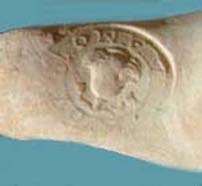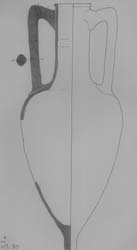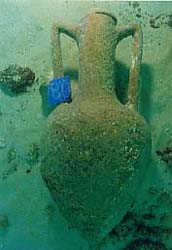AMPHORAS IN THE CENTRE D'ETUDES ALEXANDRINES
Centre d'Etude des Amphores Alexandrines (CEAA)
One could say that Alexandria is the capital of amphoras! As a matter of fact, these storage vases that were used to hold wine, oil and fish brine are found by thousands in the capital of the Ptolemies. Within the Graeco-Roman Museum there are no less than 140,000 amphora handles with the manufacturers' stamps, which represents the largest collection in the world.
Amphoras are of particular interest because :
- They allow us to retrace trade routes, and not only those in the exchange of ceramic vases, but also of agricultural produce.
- At the same time, the marks stamped in the pre-fired clay - other than dipinti and graffiti, occasional painted or engraved inscriptions - permit dating with great precision since certain stamps - such as those of Rhodes, which are found in great number - bear an indication of the year and sometimes even the month of production.
Amphoras are important evidence of ancient commerce on a grand scale, as they are also precise chronological markers that can date the archaeological layers in which they are found.



© CEA
We are studying the amphoras both from the Museum and our excavations, be they on land or underwater.
The archaeologists establish a documentation by photographing and drawing (underwater in the case of the shipwrecks) the amphoras, and then comparing them with a data base held on the upper floor of the Centre - the Centre d'Etude des Amphores Alexandrines (CEAA). Here we have thousands of drawings and photos as well as a bibliography of several thousand titles on the subject - books and articles from all round the Mediterranean sea. At the same time, there is a computerised data base gathering together all the information on all the amphoras discovered to date in our excavations.


A Rhodian amphora.
The amphora is photographed (underwater in this instance), drawn and measured. The information thus obtained is compared with the data held in the Centre and then registered on the computer.